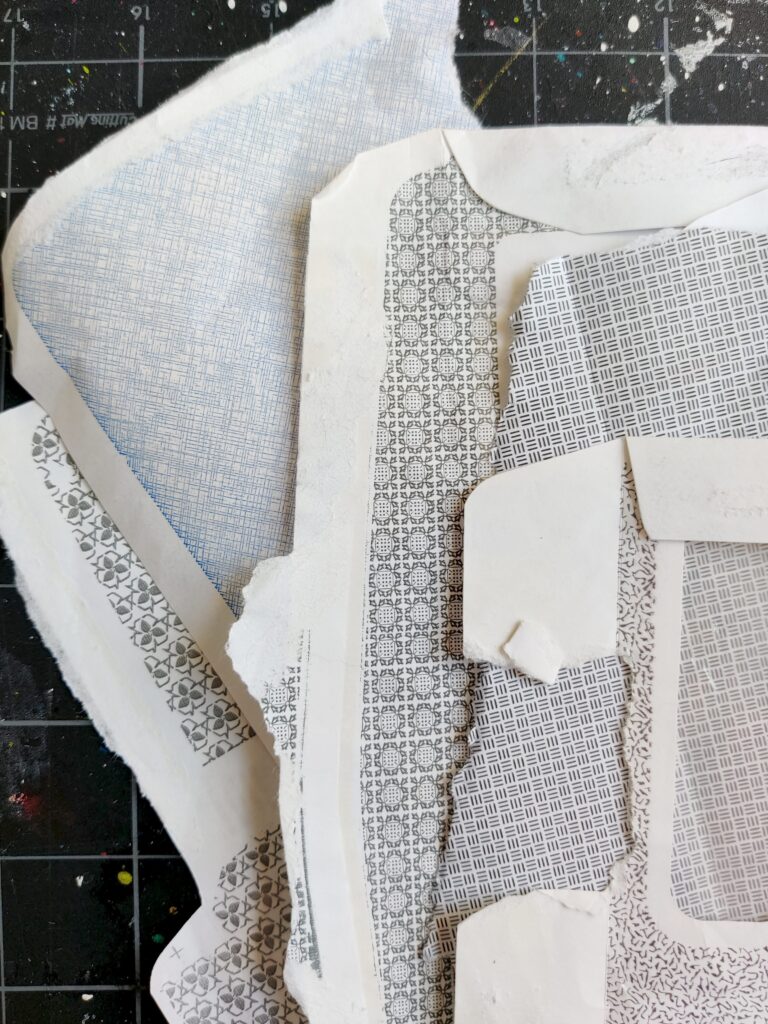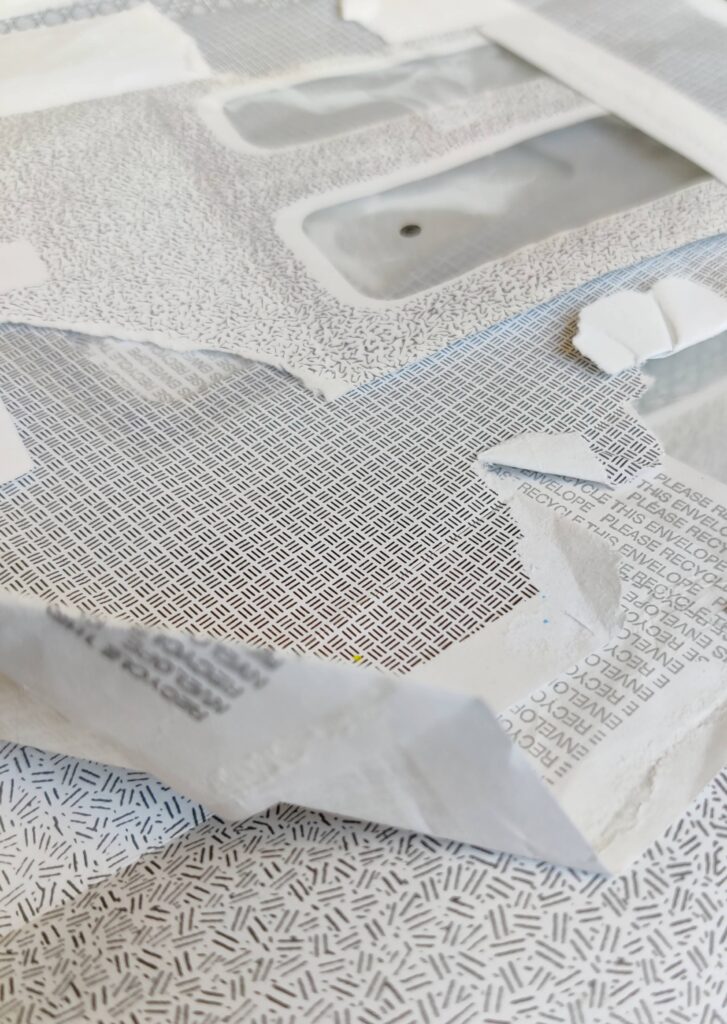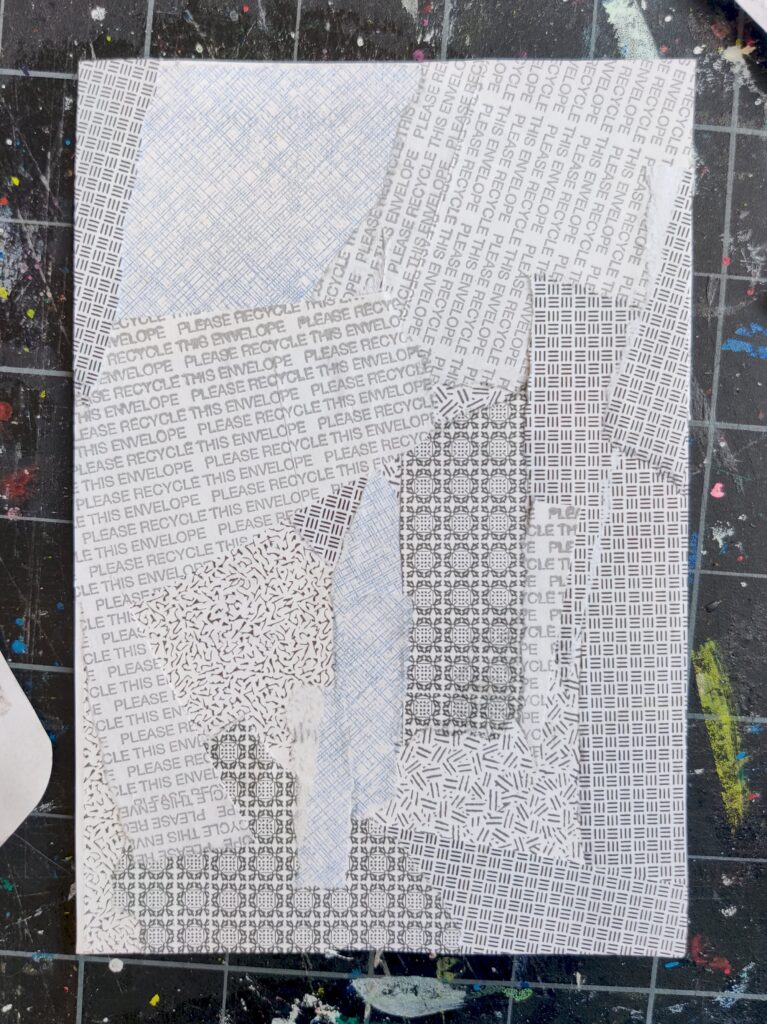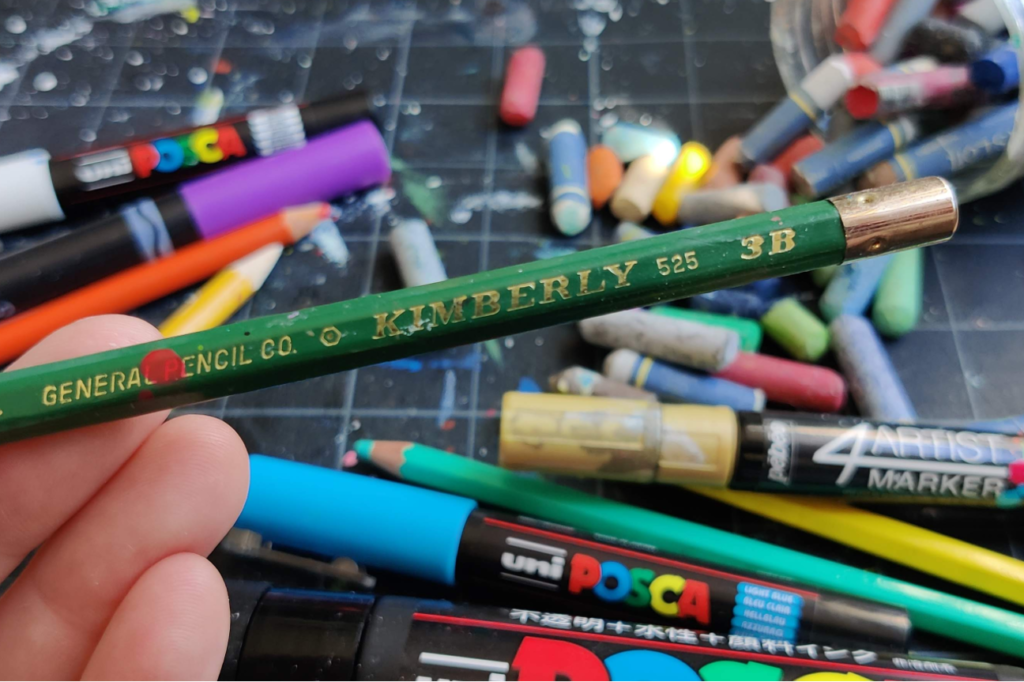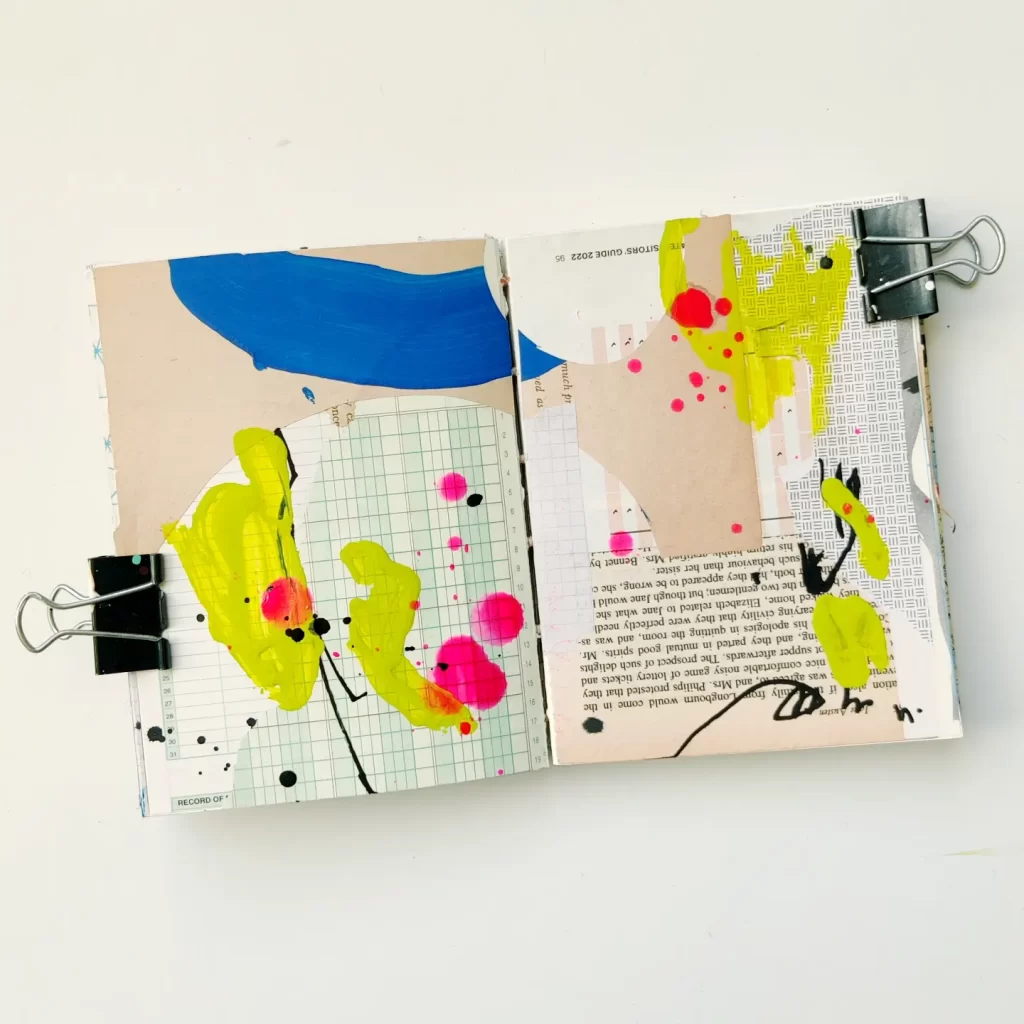
What type of journal do you use?
I make my own art journals. They measure about 4.5×6 inches (11×15 cm) and are filled with watercolor paper. They’re simpler to make than it looks; the only special materials you need are chipboard, an awl, and waxed linen thread. Check out the tutorial I use here.
In the past, I’ve also used thrifted books or handmade books by other artists.
What supplies do you use?
I use many different kinds of paper for collage, from graph paper to security envelopes to vintage book pages to other things I’ve collected over the years. For adhesive, I use a regular glue stick.
When adding color, I use a variety of mark-making tools, acrylic paint, tempera paint sticks, and acrylic ink.
What is your process?
- Lay down some collage
- Scribble
- Add some paint
- Add some drips
I always let the wet media fully dry before adding new layers.
How do you take and edit photos of your work?
I take photos with my phone in natural light, placing my art on a white foam core board. I used to edit the shots with A Color Story, but it stopped being usable. Now I use Snapseed. Both apps are free.
More questions? I’d love to hear from you. Reach out through my contact page or on Instagram!

